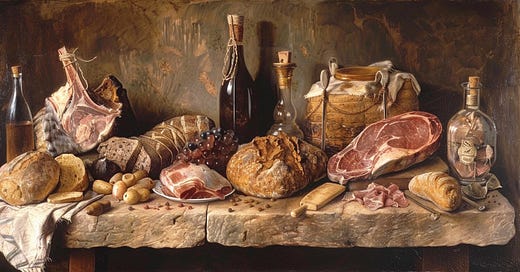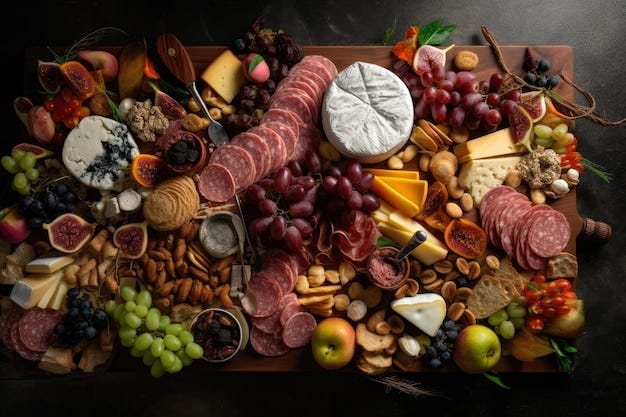The Gentrification of Charcuterie
How the skill, culture and techniques of the poor become a luxury
It is a middle class cliché. A wine bar must. A chopping board full cured meats and aged cheeses. Some almonds. Some grapes. Maybe a chutney and a breadstick. Charcuterie boards hate to see me coming.
Give me a glass of Barolo and table of European delights to pick at and I am in heaven. I will destroy that platter, but in a patient, piecemeal way so that you probably couldn’t even tell it was me. Oh look, we ate it all! We? I guess you were there too.
As charcuterie has gained popularity among affluent urbanites, it has moved beyond its modest origins into the realm of luxury. Specialty charcuterie boards, featuring exotic cured meats, artisanal cheeses, and imported condiments, are now offered at high-end restaurants and events, often with prices to match. Food is the first form of culture to be commodified in gentrification. Catering to a more affluent clientele and, in some ways, contributing to the displacement of traditional and affordable forms of the craft. While these spreads are now the preserve (pun intended) of the economically comfortable, their origins are not from the upscale parts of the food chain. They are skills and techniques developed by the poorest but are now presented as a gourmet indulgence, creating a real dissonance between its historical purpose and modern bougie consumption.
The arts of curing and smoking meats were developed by the peasant folk. They were created out of necessity. To use up every edible part of an animal. The poor can barely afford to waste a sinew. Devastating winter months required meat to be ready months in advance. You cannot trust the chilled ecosystem to provide food for a community. You had to think ahead.
To my knowledge, there is not an abundance of working class Americans forming their own prosciutto. The skills and the now belong to the wealthy. Charcuterie is really only there for those who can drop half a thou at Whole Foods every Saturday.
Modern life has stolen the two things that made it possible for these techniques to be perfected — time and the wisdom of community…





